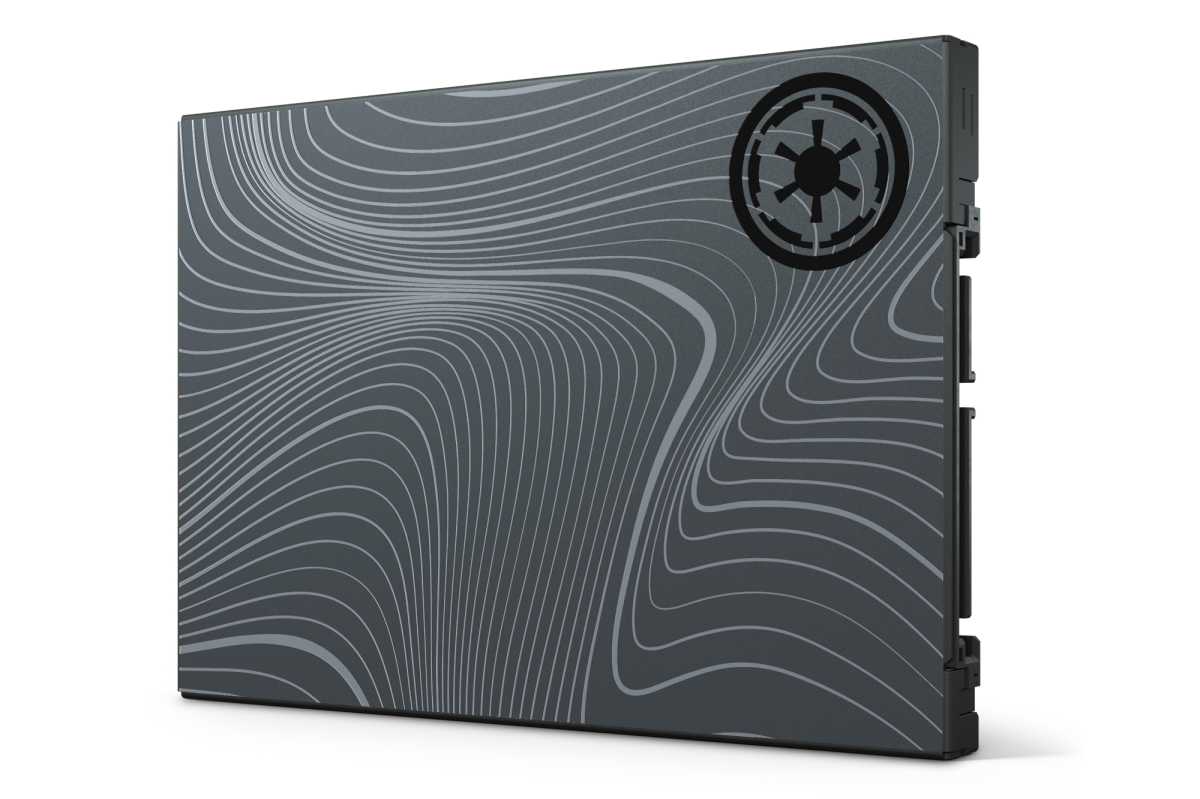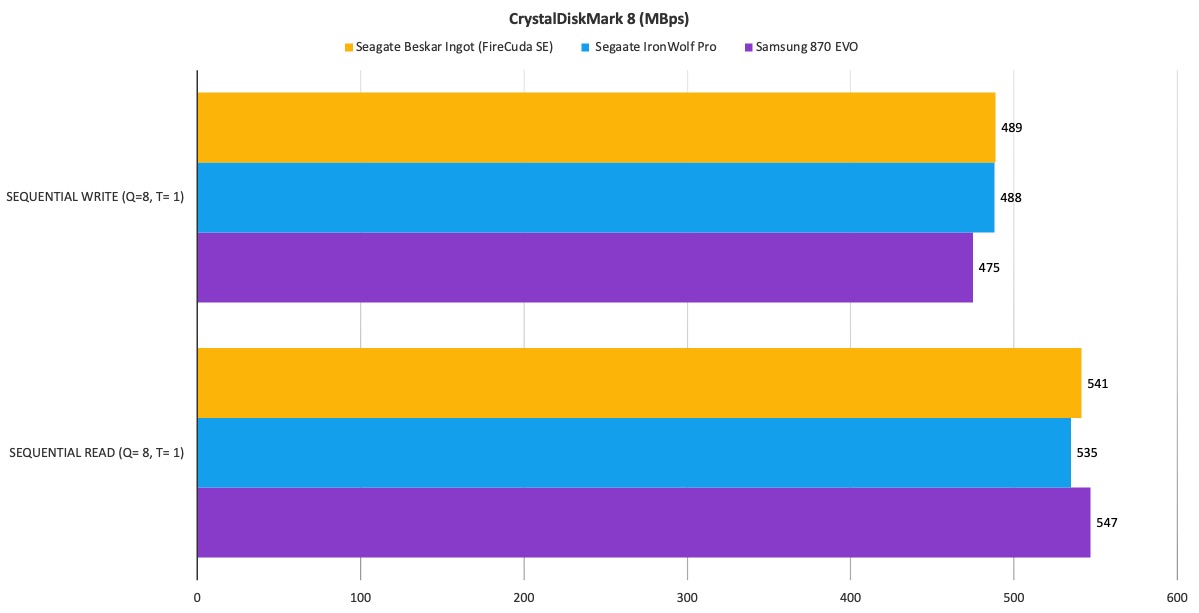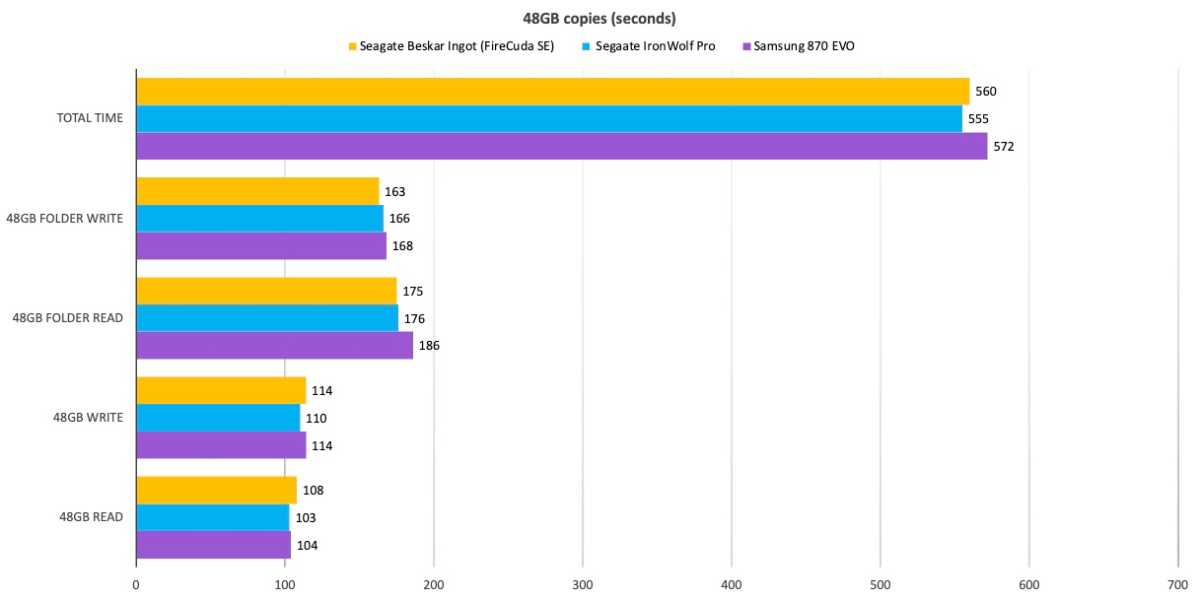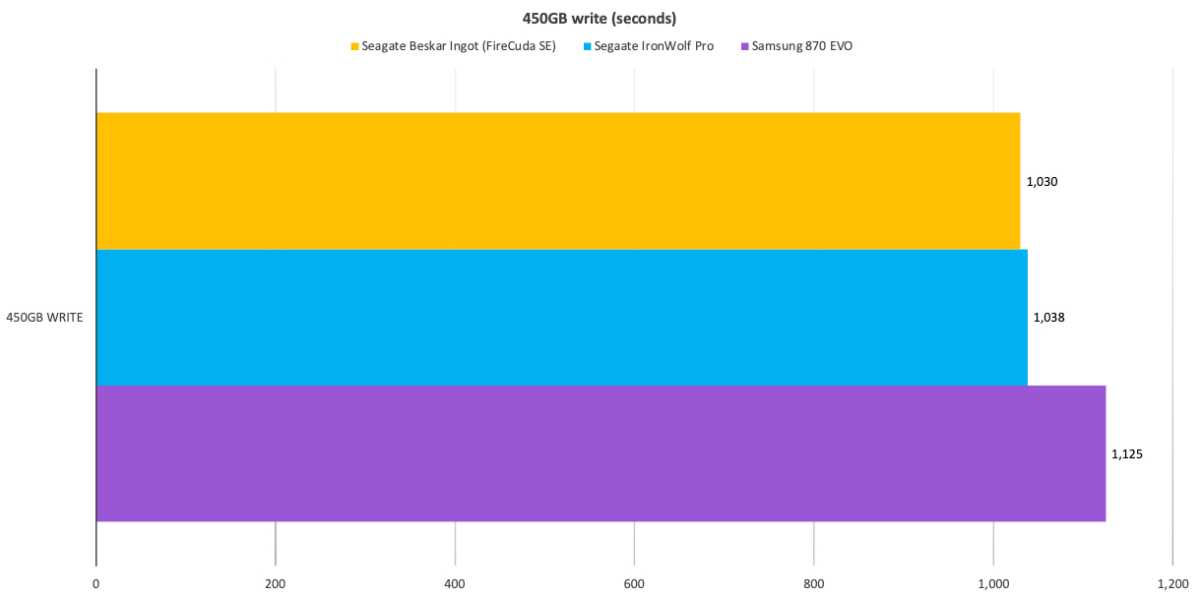Seagate Beskar Ingot SSD review: Fast SATA storage for Mandalorian fans
Expert’s Rating
Pros
- Stylish with gamer and Sci-Fi appeal
- Great SATA performance
- Three years free data recovery
Cons
- Very pricey for the capacity
- Middling TBW rating
- Requires a computer that can show it off
Our Verdict
Billed as a collectable, Seagate’s Beskar Ingot SATA SSD is pricier than the norm. But all is not glitz and franchise tie-in—it’s also one of the fastest SATA SSDs we’ve tested.
Price When Reviewed
$167.99 for 1TB I $283.99 for 2TB
Best Prices Today: Seagate Beskar Ingot SATA SSD

$269.99
Free
If you’re a fan of the Mandalorian (of Star Wars franchise fame), the Seagate Beskar Ingot SATA SSD (FireCuda SE) might just tickle your fancy. Assuming, of course, that you can view of the interior of your computer and its 2.5-inch mounting points/bays. Otherwise, the styling of this drive, as fetching or evocative as it is (it mimics the slabs of the Beskar metal used in Mandalorian armor), won’t provide much joy post unboxing.
On the other hand, you will continue to enjoy the performance—it’s one of the fastest SATA SSDs we’ve tested.
This review is part of our ongoing roundup of the best SSDs. Go there for information on competing products and how we tested them.
Seagate Beskar Ingot SSD: Design and price
The Beskar Ingot SATA is available in 1TB for $168 or 2TB for $284, which we tested. Not to be picky, but that’s pricey. Not only for SATA, but for NVMe. Speaking of which, if your system supports it—Seagate makes the Ingot in an NVMe version we’ll be reviewing soon, though it was available only in a 500GB flavor as of this writing. And if you’re really a fan of the look, there’s an external USB hard drive that you can place conspicuously on your desk for continual viewing. (Sorry, there’s no external SSD as of yet).
As to the specifics of the Beskar Ingot reviewed here, it’s a SATA 6Gbps drive in the standard 2.5-inch form factor. There’s a Seagate validated Phison S12 controller, 512MB of DRAM primary cache and 64-layer TLC NAND. The drive actually identifies itself in benchmarks, etc. as a FireCuda SE, which doesn’t seem to be sold in a non-themed version.

Whatever the components, the drive was among the fastest we’ve tested, and fastest in some tests.
The Beskar Ingot drive carries a five-year warranty with three years of free data recovery. We certainly hope you wouldn’t need the latter and, given the reliability of SSDs these days, we’re pretty sure you won’t. It’s more a feature of interest in high-transaction enterprise drives but Seagate throws it in here, likely to ameliorate sticker-shock.
And we do wish the TeraBytes Written (aka TBW, or amount of data that may be written to the drive) rating was a tad higher: 1,150TBW is rather low for a 2TB drive of this price. (It’s 600TBW for the 1TB version.) In case you’re not familiar, SSD warranties are similar to those of automobiles: five years or 1,150TBW in this case. Exceeding either limit absolves the company of the obligation to replace the drive.
Seagate Beskar Ingot SSD: Performance
The Beskar Ingot’s performance was one of the best we’ve seen out of a SATA TLC drive under Windows 11, competing roughly on par with two very fast drives: Seagate’s 960GB IronWolf Pro and a 4TB Samsung 870 EVO. It even sustained its average 435MBps real-world write pace with our 450GB single file. It should be noted, that SSD technology long ago outstripped the throughput of the SATA bus, so everyday performance across the slower bus is generally very similar.
However, even within the bandwidth limitation, the Beskar Ingot did well. Also note that these are new results for the IronWolf Pro and 870 EVO that may not match those in their individual reviews.

The Beskar Ingot/FireCuda SE did very well in our real-world 48GB transfers, besting the 870 EVO by 12 seconds overall. However, it finished slightly behind the IronWolf Pro, largely due to the latter’s dexterity with the single, large 48GB file.

As mentioned previously, the Beskar Ingot sustained well during our 450GB single-file write, turning in the best time we’ve seen under Windows 11.

As I said up top, you won’t be disappointed in the Beskar Ingot’s performance. As long as you’re not expecting NVMe-like results. That said, subjectively, the difference between SATA and NVMe is far less noticeable in everyday use than that between SATA and hard drives.
Internal drive tests currently utilize Windows 11, 64-bit running on an MSI MEG X570/AMD Ryzen 3700X combo with four 16GB Kingston 2666MHz DDR4 modules (64GB), a Zotac (Nvidia) GT 710 1GB x2 PCIe graphics card, and an Asmedia ASM3242 USB 3.2×2 card. Copy tests utilize an ImDisk RAM disk using 58GB of the 64GB memory.
Each test is performed on a newly formatted and TRIM’d drive so the results are optimal. Over time, as a drive fills up, performance will decrease due to less NAND for caching and other factors.
The performance numbers shown apply only to the drive in the capacity tested. SSD performance can vary by capacity due to more or fewer chips to shotgun reads/writes across as well as the amount of NAND available for secondary caching.
Fast but pricey
Beskar Ingots are supposedly extremely valuable in the Disney Star Wars universe, so perhaps that’s partly the reason for this drive’s steep pricing. If you think of it as a collectable (does anyone really collect storage?), the cost might not phase you.
However, top-shelf performer or no, you can get pretty much the same performance and capacity for a lot less. Your choice.
For all the latest Technology News Click Here
For the latest news and updates, follow us on Google News.
